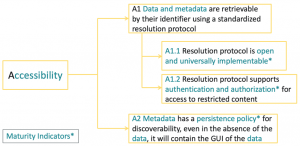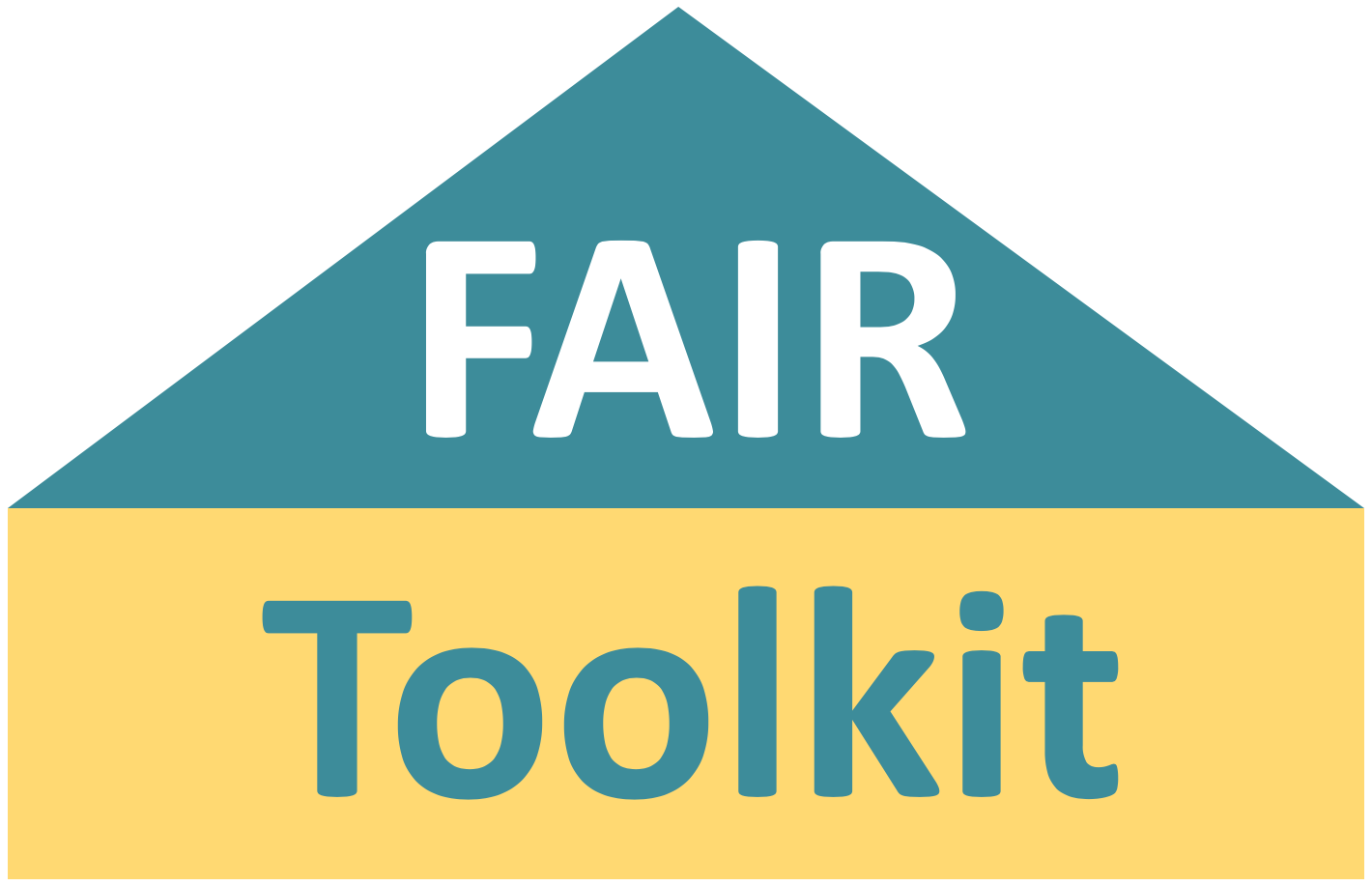Accessibility Maturity Indicators
Learn how to apply the FAIR Maturity Indicators to measure the ACCESSIBILITY of the data and metadata.
- Accessibility of data is compared with your FAIR objectives to identify and make improvements in an iterative manner
Overview
Implementation of the FAIR guidelines is measured by a framework of metrics which are now termed as Maturity Indicators (MI) [1, 2, 3]. This method is focussed on the maturity indicators to measure the findability of the data and metadata. It is a questionnaire for manual evaluation of the FAIR MIs for Accessibility which are recorded in the FAIRsharing registry [4,5]. It is important to understand that FAIR is intended to be aspirational. This means that any FAIR evaluation MIs are used to understand how to improve the FAIRness of the data.
The FAIR MIs are now reaching 2nd generation maturity as a result of community feedback and the need to automate FAIR evaluation, which is available as a public demonstrator developed by Mark Wilkinson and collaborators [6, 7]. The 2nd generation MIs have been adopted for this method to prepare for automated evaluation when they are ready for production usage by industry. All currently available FAIR evaluation tools and services have been compared by Research Data Alliance [8] who have recently released the FAIR Data Model: specification and guidelines [9].
The MIs for Accessibility are illustrated below:

How To
This questionnaire enables manual evaluation of MIs to test for Accessibility.
- Is the protocol for resolution of data and metadata identifiers universally implementable, open and free?
- Indicates if the resolution protocol is universally implementable with an open and free protocol.
- Examples: InChI Keys, DOIs, Handles, and URLs
- DOI: 10.25504/FAIRsharing.DfMGZW (Gen2-MI-A1.1)
- Indicates if the resolution protocol is universally implementable with an open and free protocol.
- Does the data and metadata identifier resolution support authentication and authorisation for access?
- Indicates if the resolution protocol supports authentication and authorization for access to restricted content.
- Examples: InChI Keys, DOIs, Handles, and URLs. Also, Dublin Core ‘Access Rights’ property.
- DOI: 10.25504/FAIRsharing.VrP6sm (Gen2-MI-A1.2)
- Indicates if the resolution protocol supports authentication and authorization for access to restricted content.
- Is there a policy for persistence of metadata?
- Indicates if there is a policy for metadata persistence.
- Examples: explicitly identified by a persistence policy key (in hashed data) or a Persistence Policy predicate in Linked Data.
- DOI: 10.25504/FAIRsharing.lEZbPK (Gen2-MI-F2A)
- Indicates if there is a policy for metadata persistence.
References and Resources
- The FAIR metrics group repository on GitHub at fairmetrics.org
- Wilkinson et al 2018 A design framework and exemplar metrics for FAIRness. Scientific Data volume5, Article number: 180118 DOI: 10.1038/sdata.2018.118
- Supplementary information for Wilkinson et al 2018: https://github.com/FAIRMetrics/Metrics/tree/master/Evaluation_Of_Metrics
- FAIR Maturity Indicators and Tools: https://github.com/FAIRMetrics/Metrics/tree/master/MaturityIndicators
- FAIRsharing registry search for FAIR metrics: https://fairsharing.org/standards/?q=FAIR+maturity+indicator
- Second generation Maturity Indicators tests: https://github.com/FAIRMetrics/Metrics/tree/master/MaturityIndicators/Gen2
- A public demonstration server for The FAIR Evaluator: https://w3id.org/AmIFAIR
- Research Data Alliance 2020 Results of an Analysis of Existing FAIR assessment tools: https://preview.tinyurl.com/yausl4s4
- Research Data Alliance 2020 FAIR Data Maturity Model: specification and guidelines: https://preview.tinyurl.com/y5tgby6w
Resources
- RDA FAIR Data Maturity Model
- Specification, guidelines and evaluation (manual sheet)
- COLID – Quick start
- Corporate Linked Data – short: COLID by Bayer AG
- A data catalogue for corporate environments that assigns URIs as persistent and global unique identifiers to any resource. The incorporated network proxy ensures that these URIs are resolvable and can be used to directly access those assets.
- COLID also provides a metadata repository for corporate assets based upon semantic models.
At a Glance
Related methods
- Findability FAIR Maturity Indicators
- Interoperability FAIR Maturity Indicators
- Reusability FAIR Maturity Indicators
Setting
- Evaluation of accessibility to improve the FAIRness of the data and metadata
Team
- Scientist generating or collecting the data and metadata
- Data steward for advice and guidance
Timing
- 0.5 day to answer the questions and faster if evaluation is automated
- Additional time will depend on implementation of the FAIR improvements
Difficulty
- Medium
Resources
Top Tips
- How FAIR are your data? Checklist by Sara Jones & Marjan Grootveld
- Open protocols are likely to be important in an industry setting because they avoid vendor dependency and persistence of metadata ensures future access to the data by authorised users.
- Note that an open protocol for identifier resolution should not be confused with making the data open because this can be sensitive e.g. personal data for a patient or data which has value as intellectual property for a commercial enterprise.
- While FAIR MIs test for the presence of identifiers and structural elements they do not measure the quality of the data which may need to be evaluated as a separate exercise using appropriate criteria of fitness.
- The FAIR MIs are not an end in themselves; they indicate how data can be made more FAIR.
- Choices on which FAIR improvement to implement should be driven by feasibility and likely benefit, including return on investment.

